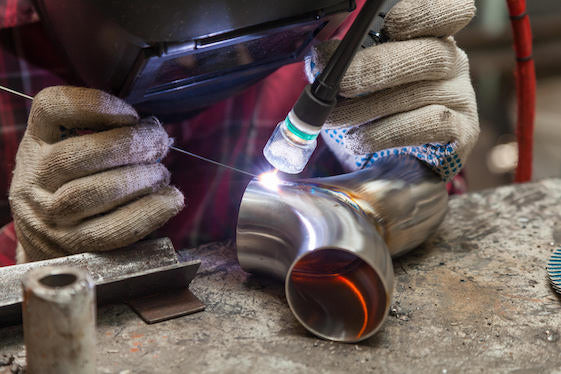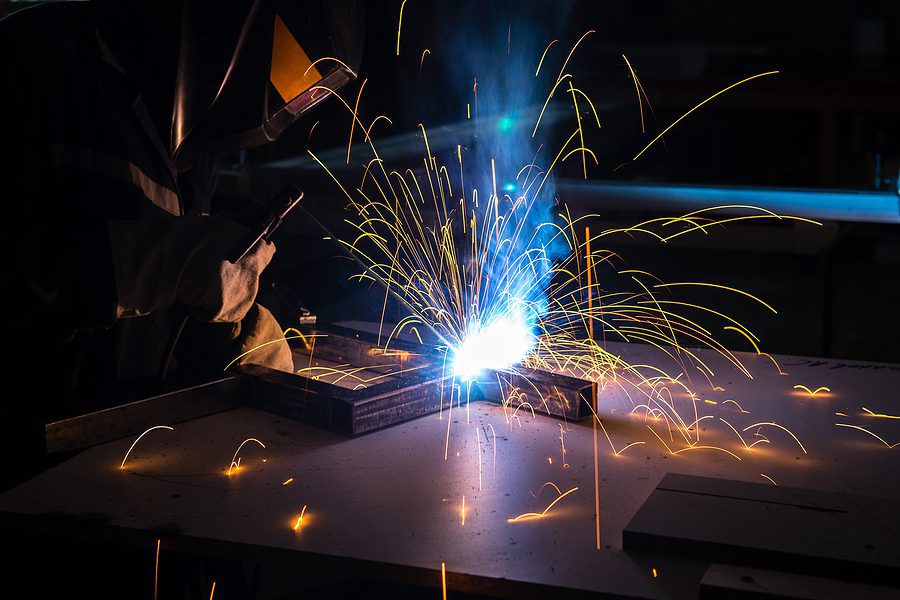All About Welding: Trick Insights Into Techniques and Finest Practices for Success
Welding incorporates a range of strategies, each suited for particular products and applications. Comprehending these approaches, such as GMAW, SMAW, and TIG, is essential for accomplishing ideal outcomes. The appropriate equipment and safety methods can not be forgotten. As prep work and troubleshooting play critical roles in the welding procedure, mastering these elements can considerably improve the high quality of the end product. What are the essential elements that assure an effective weld?
Understanding Different Welding Techniques
Welding techniques include a variety of approaches, each matched to particular applications and materials. Among the most usual strategies are Gas Steel Arc Welding (GMAW), Secured Steel Arc Welding (SMAW), and Tungsten Inert Gas Welding (TIG) GMAW, additionally called MIG welding, is preferred for its rate and adaptability, making it ideal for thin products. SMAW, or stick welding, is preferred for its simpleness and efficiency in outdoor environments, specifically with thicker steels. TIG welding provides precision and control, making it suitable for detailed work and non-ferrous metals (Belgrade Welding). Each method has its special advantages and considerations, allowing welders to pick the most effective method based upon the project's demands, material type, and desired results. Comprehending these strategies is crucial for successful welding
Necessary Welding Devices and Devices
While different welding methods require details abilities, the appropriate devices and devices are just as necessary for achieving top quality results. Crucial welding devices includes welding machines, which vary relying on the strategy-- such as MIG, TIG, or stick welding. Protective gear, including aprons, safety helmets, and handwear covers, guarantees safety and convenience throughout the procedure. On top of that, components and clamps assist protect products in area, making sure precision in welds. Consumables like welding poles, wire, and protecting gas are likewise crucial elements that affect the top quality of the weld. Devices such as cutters and grinders assist in surface preparation and post-weld finishing, adding to a professional outcome. Purchasing top quality devices inevitably boosts the effectiveness and performance of welding jobs.
Safety And Security Practices in Welding
Correct safety techniques are necessary in the welding market to protect employees from possible threats. Welders must wear appropriate individual safety tools (PPE), consisting of headgears with correct shading, handwear covers, and flame-resistant clothes. Sufficient air flow is crucial to minimize exposure to damaging fumes and gases generated throughout the welding procedure. Furthermore, workers ought to be trained in the appropriate handling of welding tools to protect against mishaps. Fire precaution, such as keeping flammable products away from the welding area and having fire extinguishers readily available, are essential. Normal assessments of equipment and workspaces can aid determine possible risks before they bring about mishaps. By sticking to these safety methods, welders can develop a much safer working environment and decrease dangers connected with their profession.
Preparing Products for Welding
Preparing materials for welding is an important step that substantially affects the high quality and honesty of the last product (Fabrication). Correct preparation includes cleansing the surfaces to eliminate pollutants such as rust, dust, and oil, which can compromise the weld. Techniques such as grinding, sanding, or making use of solvents are typically employed to accomplish a tidy surface. Furthermore, guaranteeing that the materials mesh snugly is vital; voids can result in weak welds. It's additionally essential to take into consideration the positioning and positioning of the parts, as this will certainly influence the convenience of welding and the final outcome. Selecting the appropriate filler product and making sure compatibility with the base steels is essential for attaining strong, durable welds.
Tips for Getting High-Quality Welds
Accomplishing high-grade welds requires attention to detail and adherence to best techniques throughout the welding procedure. Correct joint prep work is vital, making certain surface areas are free and tidy from pollutants. Selecting the appropriate filler material and welding technique based upon the base metals is critical for ideal bonding. Keeping consistent traveling speed and angle while welding can protect against defects and advertise harmony. In addition, controlling warmth input is necessary; extreme warmth can result in bending and compromised joints. On a regular basis checking the welds throughout the process permits instant adjustments if required. Employing proper post-weld therapies, such as cleansing and stress and anxiety alleviation, can improve the sturdiness and stability of the weld, inevitably making sure a successful result.
Fixing Common Welding Issues
Welding often offers obstacles that can impact the high quality and integrity of the end product. Common concerns such as porosity, inconsistent weld grains, and overheating can arise, each calling for details repairing strategies. Understanding these issues is crucial for welders to improve their abilities and achieve optimal results.
Porosity Troubles Discussed
Although porosity can commonly be forgotten, it stays an essential issue in welding that can endanger the stability of a completed item. Porosity describes the visibility of small gas pockets within the weld bead, which can deteriorate the joint and lead to early failure. This issue generally occurs from contaminants, wetness, or incorrect protecting gas protection throughout the welding procedure. To reduce porosity, welders ought to verify that the base materials are dry and tidy, use proper protecting gases, and maintain regular welding specifications. Routinely evaluating the devices and setting can also assist identify possible issues before they manifest in the weld. Addressing porosity properly is crucial for attaining solid, sturdy welds that satisfy high quality requirements.

Irregular Weld Beads
Irregular weld beads can significantly impact the quality and strength of a finished item. Numerous factors add to this issue, including incorrect traveling speed, inaccurate amperage settings, and inconsistent electrode angles. When the welder moves also quickly, a grain may show up slim and do not have infiltration, while moving also slowly can cause too much buildup. Additionally, using the wrong amperage can lead to either damaging or extreme spatter, both of which compromise weld stability. The welder's technique, such as irregular lantern activity, can also lead to irregular grain look. To alleviate these problems, welders ought to concentrate on keeping stable, regulated movements and making sure appropriate devices setups to achieve harmony in their welds. Consistency is crucial to achieving strong and trustworthy welds.
Getting Too Hot and Bending Issues
Excessive warm during the welding procedure can cause considerable getting too hot and buckling problems, influencing the structural stability of the work surface. These problems usually show up as distortion, which can compromise alignment and fit-up, making more setting up testing. Aspects adding to overheating consist of the choice of welding parameters, such as voltage and travel speed, along with the kind of material being bonded. To minimize these concerns, welders should maintain consistent traveling speed and suitable warmth input while keeping an eye on the workpiece temperature. In addition, pre-heating or post-weld warm therapy can help minimize stress and anxieties caused by quick air conditioning - Montana Mobile Welding and Repair Belgrade Welding. Routine assessment and adherence to ideal methods are vital in stopping overheating and making sure the durability and reliability of bonded frameworks
Often Asked Inquiries
What Are the Occupation Opportunities in the Welding Industry?
The welding industry offers diverse job opportunities, including placements as welders, teachers, examiners, and engineers. Professionals can work in get more info production, building and construction, aerospace, and auto markets, benefiting from solid demand and competitive incomes in numerous duties.
Exactly How Can I Improve My Welding Speed Without Sacrificing Quality?
To improve welding speed without giving up quality, one should practice effective strategies, preserve tools, enhance settings, and boost hand-eye sychronisation. Routine training and seeking responses can additionally substantially add to achieving much faster, top quality welds.
What Certifications Are Offered for Welders?
Numerous accreditations exist for welders, including those from the American Welding Culture (AWS), the National Center for Construction Education And Learning and Research (NCCER), and different industry-specific organizations. These qualifications boost employability and demonstrate ability effectiveness.
How Does Welding Impact the Characteristics of Metals?
Welding influences the homes of steels by changing their microstructure, which can cause modifications in ductility, toughness, and firmness. Warm input and air conditioning prices throughout the procedure considerably impact these material qualities.
Can I Weld Dissimilar Metals Together?
